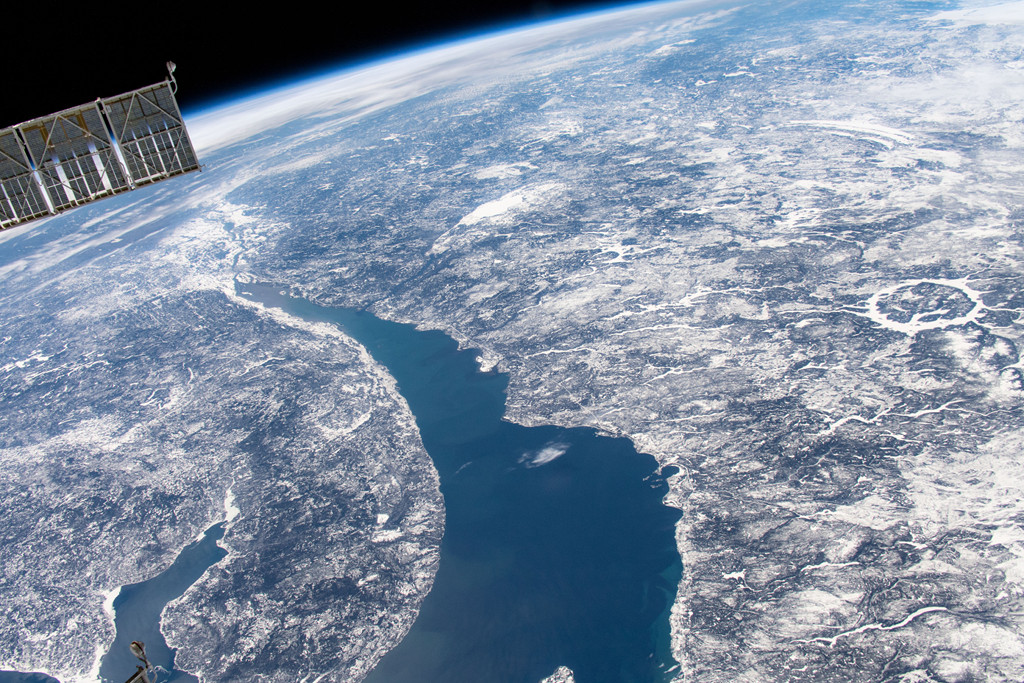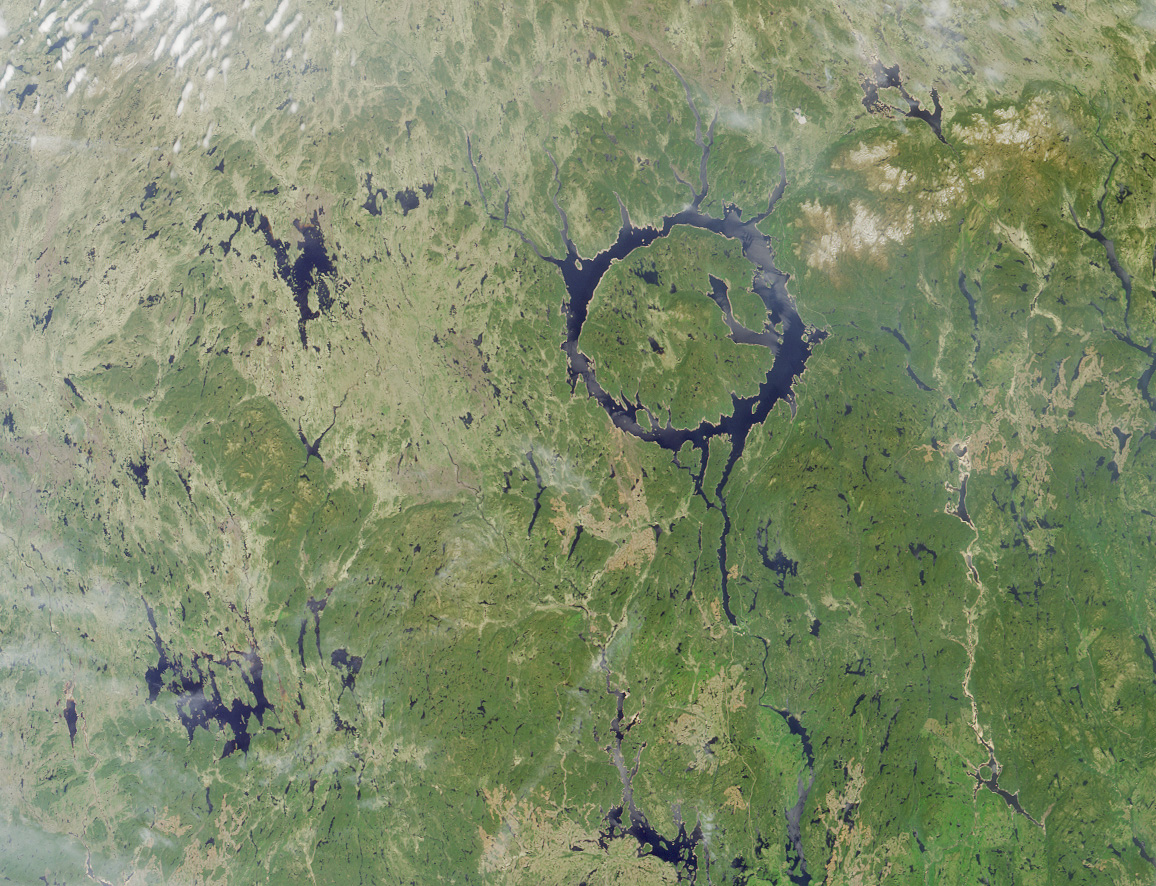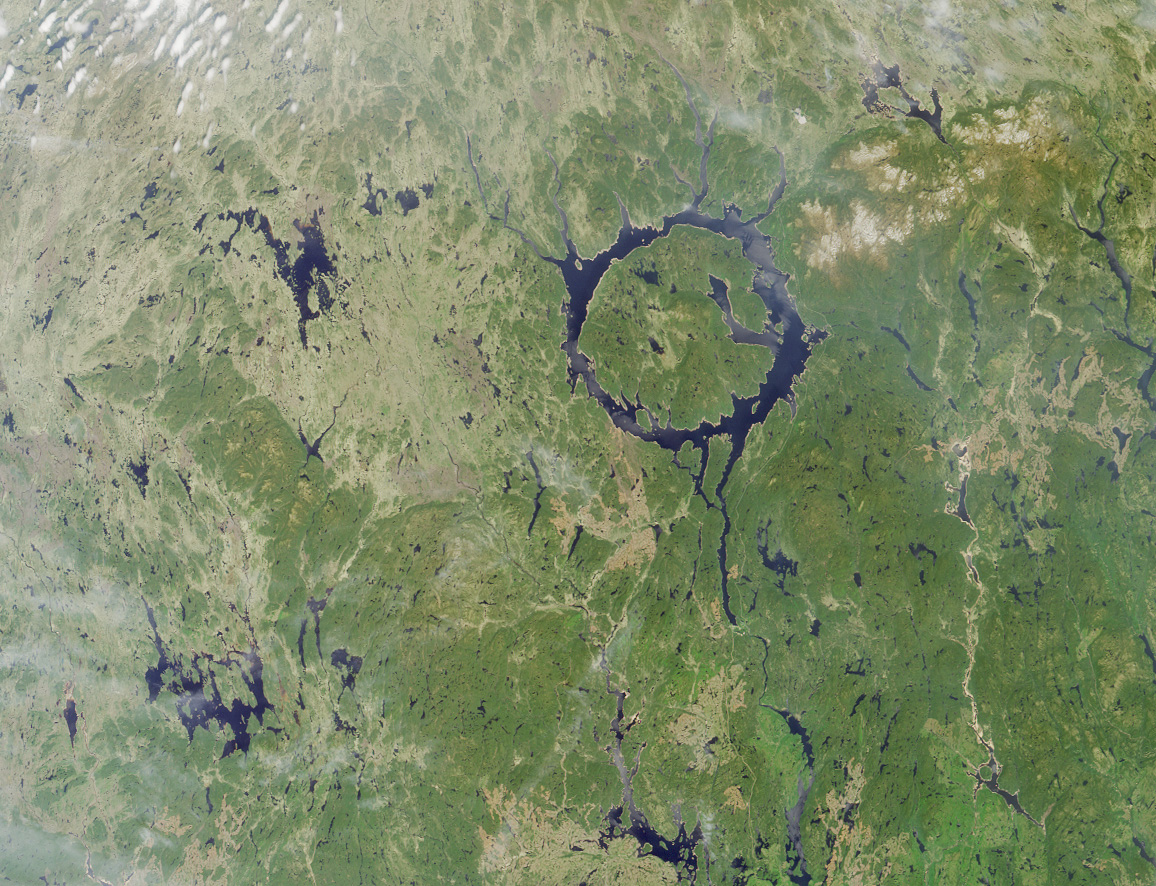
Explanation:
Orbiting 400 kilometers above Quebec, Canada, planet Earth, the
International Space Station
Expedition 59 crew captured
this snapshot of the broad
St. Lawrence River and curiously circular Lake Manicouagan on April 11.
Right of center, the ring-shaped lake is a
modern reservoir
within the eroded remnant of an ancient 100 kilometer
diameter impact crater.
The ancient crater is very
conspicuous from orbit,
a visible reminder that Earth is vulnerable to
rocks from space.
Over 200 million years old, the Manicouagan crater was
likely caused by the impact of a rocky body about
5 kilometers in diameter.
Currently, there is no known asteroid with a significant probability of
impacting Earth in the next century.
Each month,
NASA’s Planetary Defense
Coordination Office
releases an update
featuring the most recent figures on
near-Earth object close approaches, and other
facts about comets and asteroids that could pose a potential impact
hazard with Earth.
Source: https://apod.nasa.gov/apod/ap240525.html

